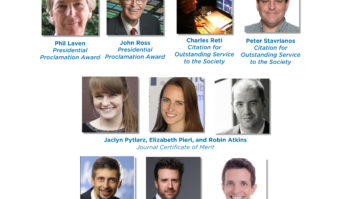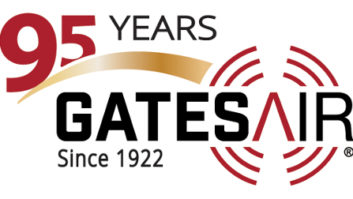• Thursday morning April 19
“Radio Technology Advancements”by John M. Lyons
One in a series of day-by-day descriptions of events at the upcoming Broadcast Engineering Conference of NAB2007.
Gary Kline, vice president of engineering and information technology for Cumulus Media, will chair a session Thursday morning about advancements in radio technology, “most of which we can implement today,” he said.
The session will include the latest RDS technologies; updates to Longley-Rice for coverage predictions; an NRSC update; and digital trends in Europe, Africa and the Middle East.
RADIO TECHNOLOGY ADVANCEMENTS
Opening the session will be Michael Bergman, vice president of new digital technologies at Kenwood, on the subject of “RDS Enhancements: Artist and Song Title Through RT+.”
“RT+ is a slender upgrade to RDS,” he said. “It allows an FM station to put artist, title, station information and more on a car stereo or other FM receiver. If a station has already tied their automation text to RT or PS, adding RT+ is very cost-effective (read: cheap).”
Hardware makers — such as Kenwood with car stereos, Nokia with FM-enabled phones and Microsoft with Zune — have started supporting RT+ in products, and some large broadcast groups are converting over.
“As a bonus, it can interoperate with HD Radio, too. Text, especially artist and title information, have long been the domain of digital radio and iPod, but analog FM is getting this feature as well.”
Next on the morning agenda is “Updating Longley-Rice for FM Reception Prediction” by Sid Shumate, senior appraiser and director of engineering for BIA Financial Network.
Today computers make it easier to deal with the large multitude of propagation points than the 1982 computers that were first used.
“Once the FCC accepted the use of Longley-Rice methodology, utilizing a 30 arc-second database, there has been a certain reluctance to experiment with, or change to improve, what is accepted as good enough for government work,” he said. “Today’s desktop PCs are far faster and more capable and have much larger RAM and hard-drive memory than the 1982 mainframe computers overcoming the stumbling block of the ‘80s.”
“Planning of the Digital Terrestrial Broadcasting Service in Parts of Region 1 and 3, in the Frequency Bands 174–230 MHz and 470–862 MHz (RRC-06)” will be presented by Pham Hai, head of the Broadcasting Services Division of the International Telecommunications Union in Geneva, Switzerland.
He will discuss the results of the June 2006 meeting resulted in planning an “all-digital terrestrial broadcast service for sound and television” across Europe, Africa, the Middle East and Iran by 2015, coinciding with the target date set by the Millennium Development Goals of the ITU.
Highlights will be on implications for digital services across that region.
Matthew Straeb, executive vice president of Global Security Systems in Lafayette, La., continues the session on radio technology advancements with his presentation on “FM-Based Technologies Now and in the Future.”
“FM needs to support data systems for emergencies. Cell, satellite and cable are all trying to take this service from FM,” he said. This paper will provide radio broadcasters the information needed to take a giant step for safety at little cost, in his view.
“Public Radio International’s Program Service Data Project: A New Dimension of Local Service on HD Radio” — Riccardo Ruotolo, director of information technology for PRI, will report on its CPB-funded PSD Standards Project. Findings, tools and guidelines are included in a new “PSD Cookbook.”
The Standards Project has involved FM stations including WGBH, KUVO, WFAE, WUSF and others; technology partners including Public Interactive, BE and ENCO Systems; and distribution partners PRSS and PRX, as well as others. PRI has provided project leadership and management.
Concluding the session with the latest “NRSC Report” are David Layer, director of advanced engineering at the National Association of Broadcasters, and Skip Pizzi, technical policy manager for Microsoft, who also is a contributing editor to RW.
Layer said: “The NRSC has been very active over the last year in two important areas: AM bandwidth and surround sound for IBOC.” The presentation will focus on these areas and where NRSC expects to be heading in the coming year.
Thursday: Radio Technology Advances
One in a series of day-by-day descriptions of events at the upcoming Broadcast Engineering Conference of NAB2007.











